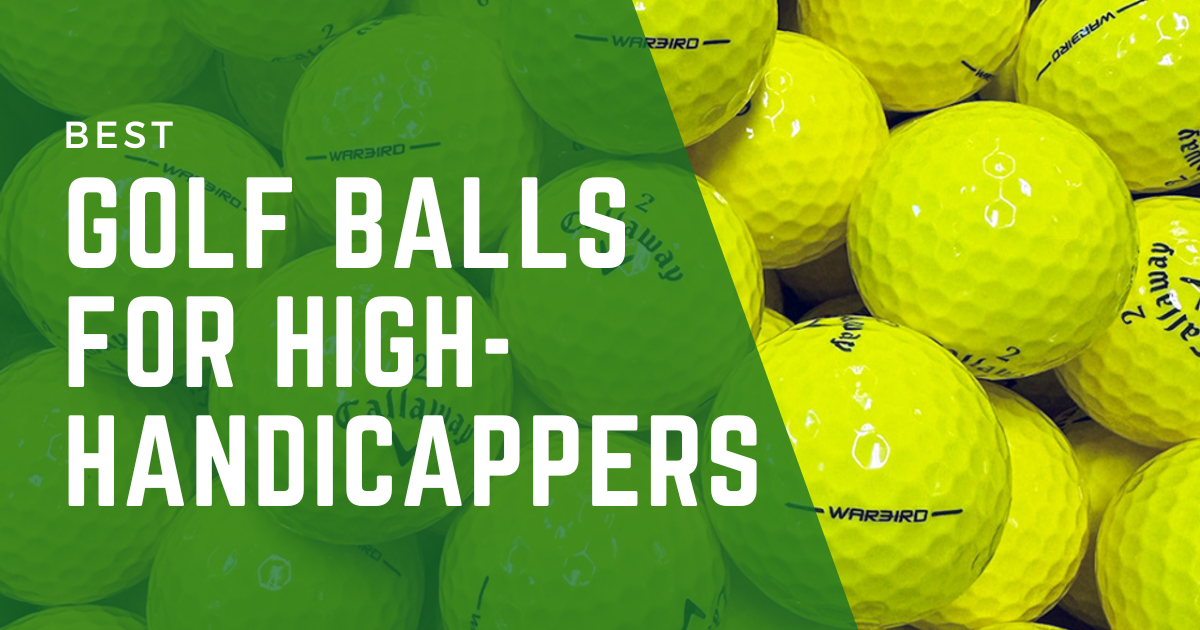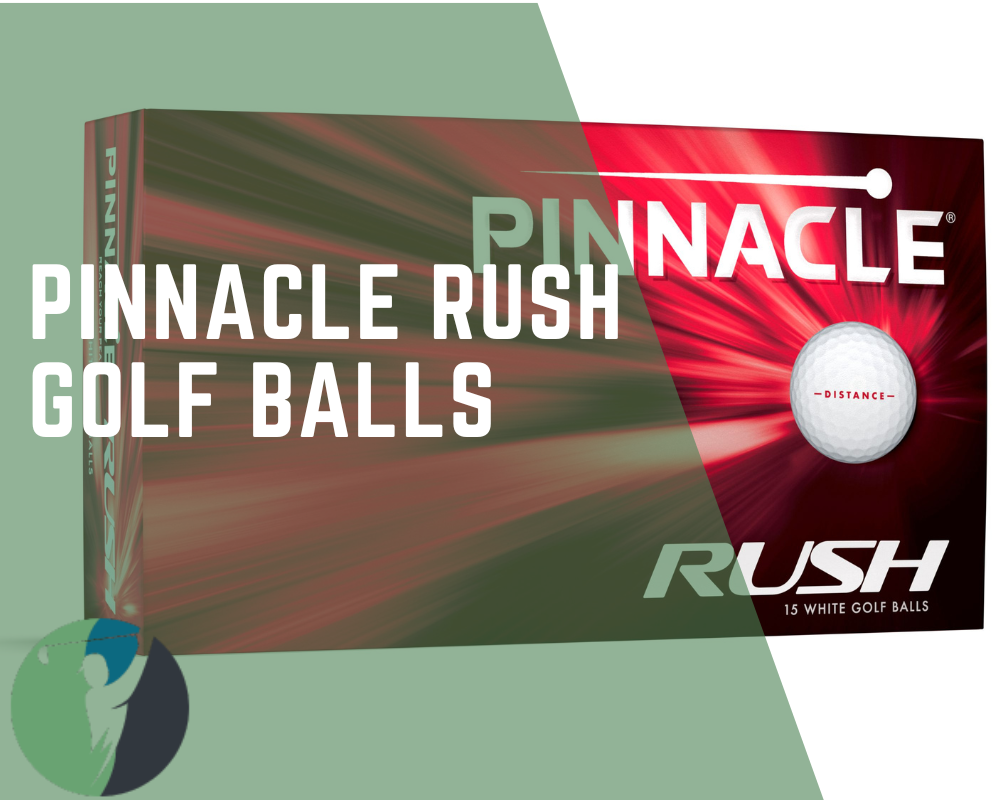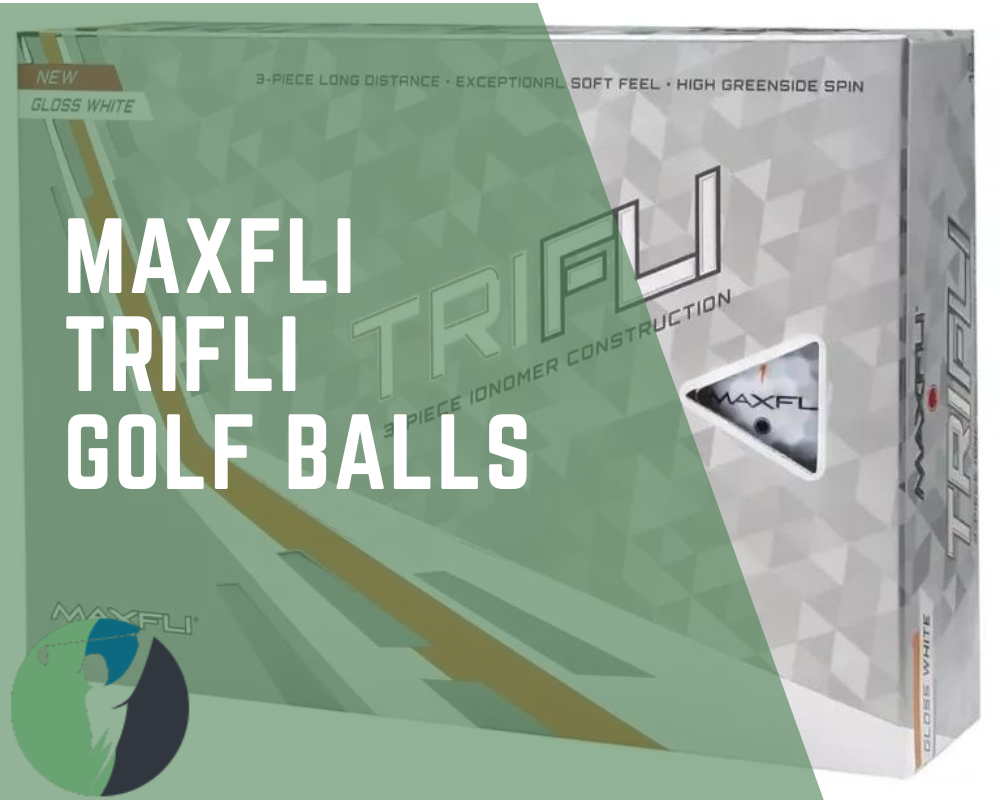Ah, the sweet sound of a well-struck golf ball soaring through the air – it’s music to any golfer’s ears, isn’t it? But for us high-handicappers, that melody can sometimes feel more like a discordant cacophony. Trust me, I’ve been there. As a passionate golfer who’s spent years battling the highs and lows of a double-digit handicap, I know firsthand the frustration of watching your ball slice into the rough or plop unceremoniously into a water hazard.
Here’s the thing, while practice and lessons are crucial, your choice of golf ball can make a difference. It’s like trying to run a marathon in flip-flops – you might finish, but it won’t be pretty, and you’re definitely not doing yourself any favors.
So, what’s a high-handicapper to do? Fear not, my fellow! I’ve done the legwork (or should I say, the “swing work”?) to bring you the ultimate guide to the best golf balls for high handicappers. We’ll dive into the nitty-gritty of what makes a ball “high-handicapper friendly,” explore top options from market, and maybe even sprinkle in a few nuggets of wisdom I’ve picked up along the way.
Whether you’re struggling with distance, battling a wicked slice, or just looking to shave a few strokes off your game, this guide’s got you covered. We’ll look at balls that offer forgiveness, distance, and even a few that might help you feel like a pro (even if your scorecard says otherwise).
So let’s tee off on this journey to find the perfect ball for your game. Who knows? By the end of this guide, you might just be inspired to dust off your clubs and hit the links with renewed confidence. After all, golf is about the journey, not just the destination – although reaching the green in fewer strokes sure doesn’t hurt!
Best Golf Balls For High Handicappers
Now, let’s dive into our picks for high-handicappers:
- Titleist TruFeel Golf Balls.
- Bridgestone e6 Golf Balls.
- TaylorMade Distance+ Golf Balls.
- Callaway ERC Soft Triple Track Balls.
- Srixon Distance Balls.
- Srixon Soft Feel Golf Balls.
- Nitro High-Durability Golf Balls.
- Pinnacle Rush Golf Balls.
Titleist TruFeel Golf Balls: The Soft Touch Specialist
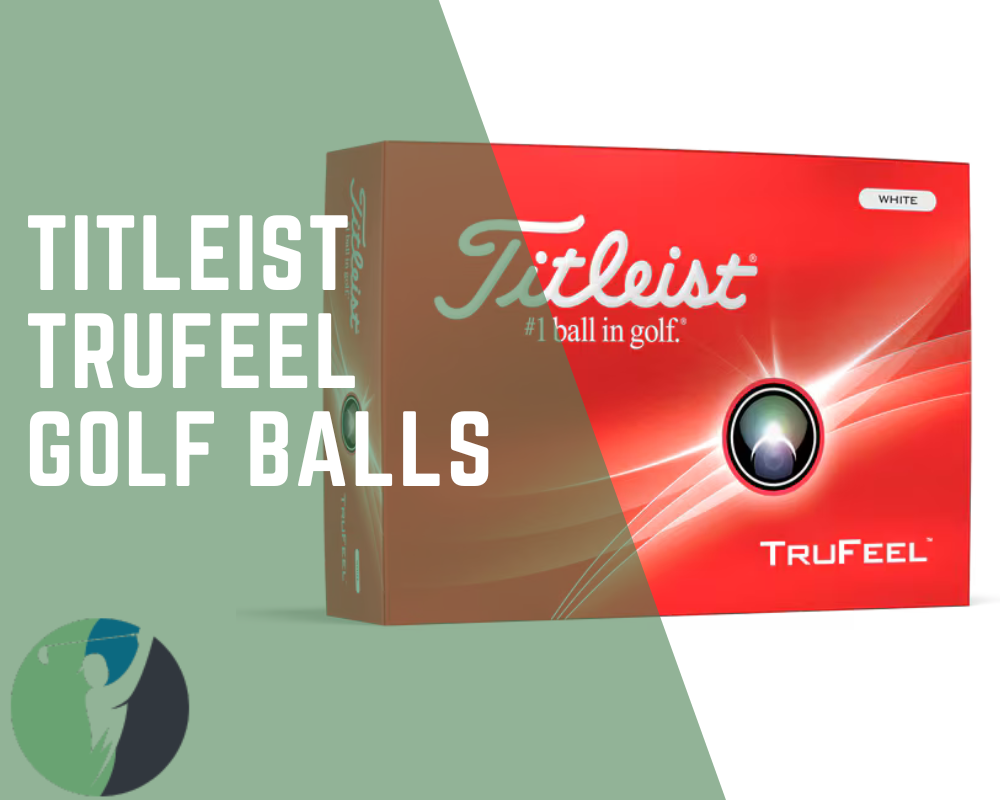
When it comes to golf balls, Titleist is a name that needs no introduction. But don’t let their pro-tour reputation intimidate you – the TruFeel is designed with players like us in mind. This ball is like that friend who’s always there to boost your confidence, even when you’re having an off day on the course.
The TruFeel is all about, well, feel. It’s one of the softest balls in Titleist’s lineup, which translates to a more forgiving experience for high-handicappers. You know that satisfying sensation when you make good contact? The TruFeel amplifies that, giving you more of those “Yeah, I meant to do that!” moments.
But it’s not just about feel. The TruFeel is engineered with a low compression core, which is a fancy way of saying it’s easier to compress the ball at impact, even if your swing speed isn’t quite PGA Tour level (yet). This means you’ll get more distance off the tee and with your long irons.
The ball’s cover is designed to produce less spin off the driver, which can be a godsend for those of us battling a slice. Less spin means straighter shots, and straighter shots mean fewer balls lost in the woods. Your wallet will thank you!
Around the greens, the TruFeel offers decent control. While it may not have the same spin as some premium tour balls, it provides enough grab to help you hold greens and even attempt those delicate chip shots without fear.
Who should use the Titleist TruFeel? If you’re a high-handicapper looking for a confidence boost, struggle with distance, or fight a slice, this ball could be your new best friend on the course. It’s also a great option for players with slower swing speeds who want to maximize their distance without sacrificing too much control.
Pros:
- Soft feel promotes confidence and feedback.
- Low compression core helps with distance for slower swing speeds.
- Reduced driver spin can help minimize slices.
Cons:
- May lack the spin control of more premium balls around the greens.
Bridgestone e6 Golf Balls: The Straight Shooter
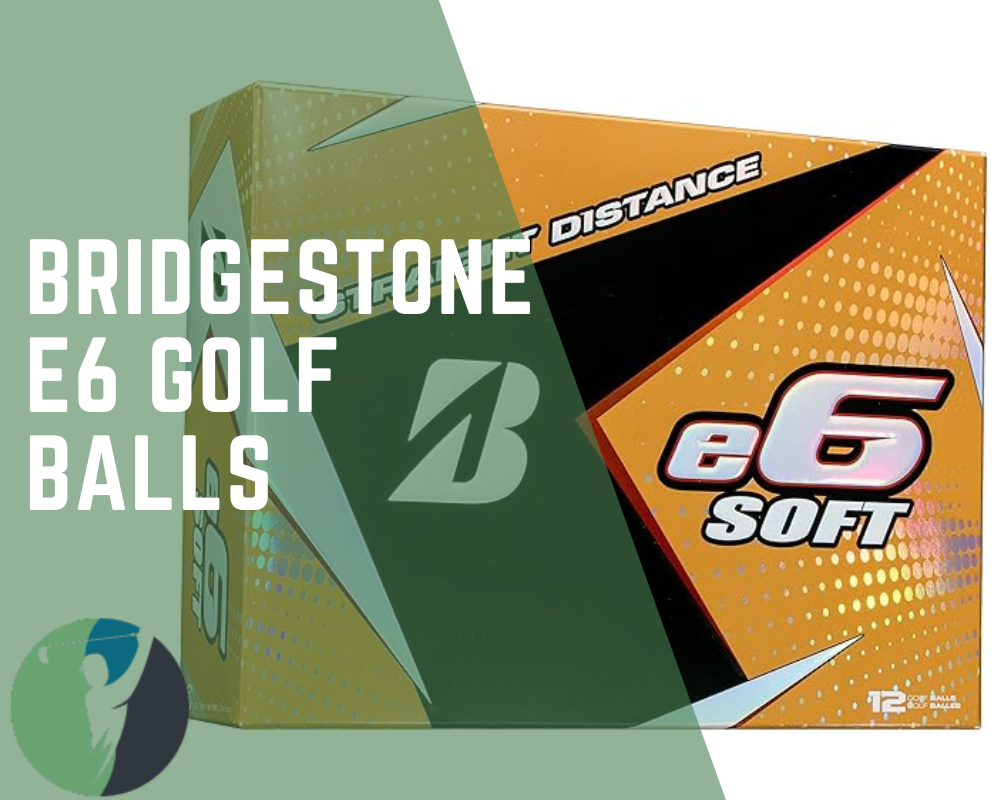
Alright, let’s talk about second option the Bridgestone e6 – a ball that’s been helping high-handicappers find fairways for years. If the e6 were a person, it’d be that straight-talking friend who always keeps you on the right path, even when you’re tempted to take a shortcut through the trees.
The e6 is all about one thing: straightness. Bridgestone has designed this ball with a focus on reducing side spin, which is the primary culprit behind those frustrating slices and hooks that send your ball on unintended adventures. The magic lies in its soft core and seamless cover construction, working together like a well-oiled machine to keep your shots on the straight and narrow.
But don’t think for a second that straightness comes at the cost of distance. The e6 packs a surprising punch off the tee, thanks to its gradational core design. It’s like having a mini power booster in your ball, helping you squeeze out those extra yards that can make all the difference between reaching the green and falling just short.
One of the things I love about the e6 is its versatility. Whether you’re crushing drives, approaching greens, or finessing short game shots, this ball offers a consistent feel and performance. It’s like having a reliable caddie in your pocket, ready to assist with any shot you face.
The soft feel of the e6 is another big plus for high-handicappers. It provides excellent feedback on impact, helping you get a better sense of your shots. This can be crucial for improving your game and building confidence in your swing.
Who should use the Bridgestone e6? If you’re a high-handicapper who struggles with keeping the ball in play, battles with slices or hooks, or just wants a reliable all-around performer, the e6 is calling your name. It’s also great for players who want a softer feel without sacrificing too much distance.
Pros:
- Excellent at reducing side spin for straighter shots.
- Provides good distance off the tee.
- Soft feel offers great feedback.
Cons:
- May not provide as much spin control for advanced short game shots.
TaylorMade Distance+ Golf Balls: The Long Drive Champion
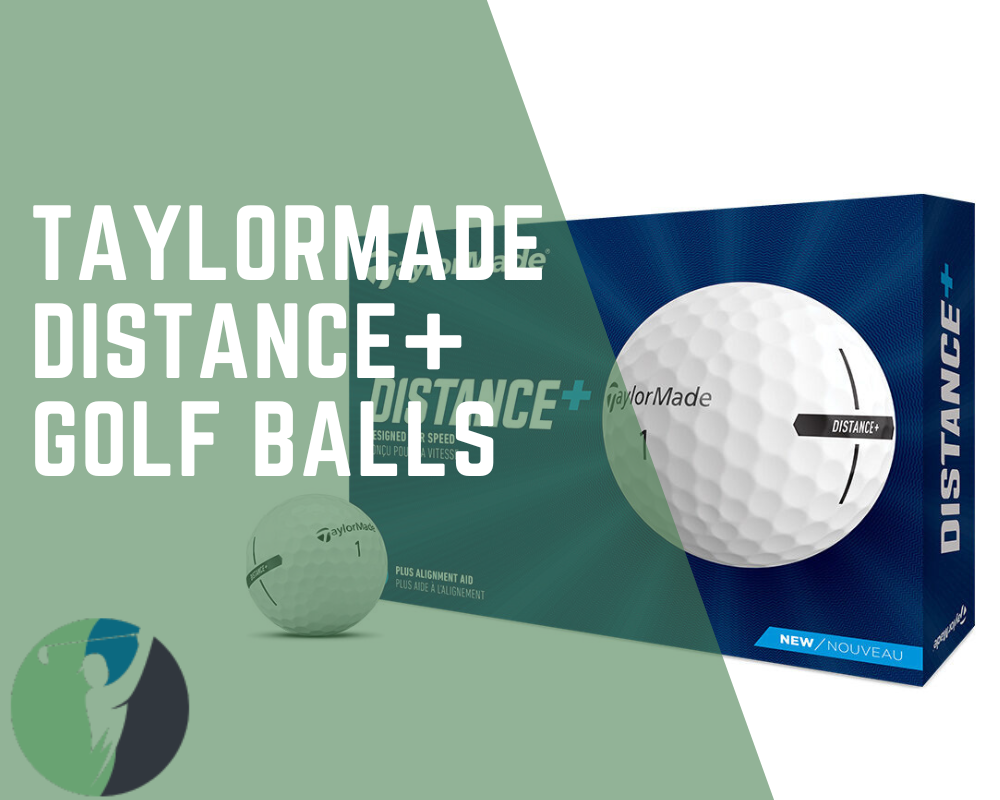
Buckle up, fellows, because we’re about to talk about a ball that’s all about going the distance – the TaylorMade Distance+. If this ball were an athlete, it’d be a long-jump champion, always striving to push the boundaries of how far it can go.
The Distance+ is TaylorMade’s answer to the high-handicapper’s eternal question: “How can I hit it farther?” They’ve packed this ball with technology aimed at maximizing distance, making it a go-to choice for players who feel like they’re always a club short.
At the heart of the Distance+ is its REACT Speed Core. Don’t worry, it’s not actually reacting to anything – it’s just really good at transferring energy from your club to the ball. This means that even if your swing isn’t quite as fast as you’d like, you’ll still get an impressive boost off the tee.
The ball’s cover is designed with aerodynamics in mind. TaylorMade has used what they call a “355 dimple pattern”. These dimples work together to reduce drag and promote a penetrating ball flight. In simpler terms? Your ball will cut through the air like a hot knife through butter, potentially adding those precious extra yards to your drives and long iron shots.
But the Distance+ isn’t just a one-trick pony. While distance is its primary focus, it also offers a surprisingly soft feel for a distance ball. This can be a confidence booster when you’re standing over those crucial putts or delicate chip shots.
Now, let’s be real for a second – if you’re looking for Tour-level spin and control around the greens, this might not be your ball. But for high-handicappers focused on getting more distance and keeping the ball in play, the trade-off is usually worth it.
Who should use the TaylorMade Distance+? If you’re a high-handicapper who feels like you’re always coming up short, struggles to keep up with your playing partners off the tee, or just wants to experience the thrill of watching your ball soar further than ever before, give the Distance+ a shot. It’s also a great option for players with slower swing speeds looking to maximize their distance potential.
Pros:
- Exceptional distance off the tee and with long irons.
- Aerodynamic design promotes a penetrating ball flight.
- Offers a softer feel than many distance-focused balls.
Cons:
- May lack the spin and control of more well-rounded balls around the greens.
Callaway ERC Soft Triple Track Balls: The Alignment Ace
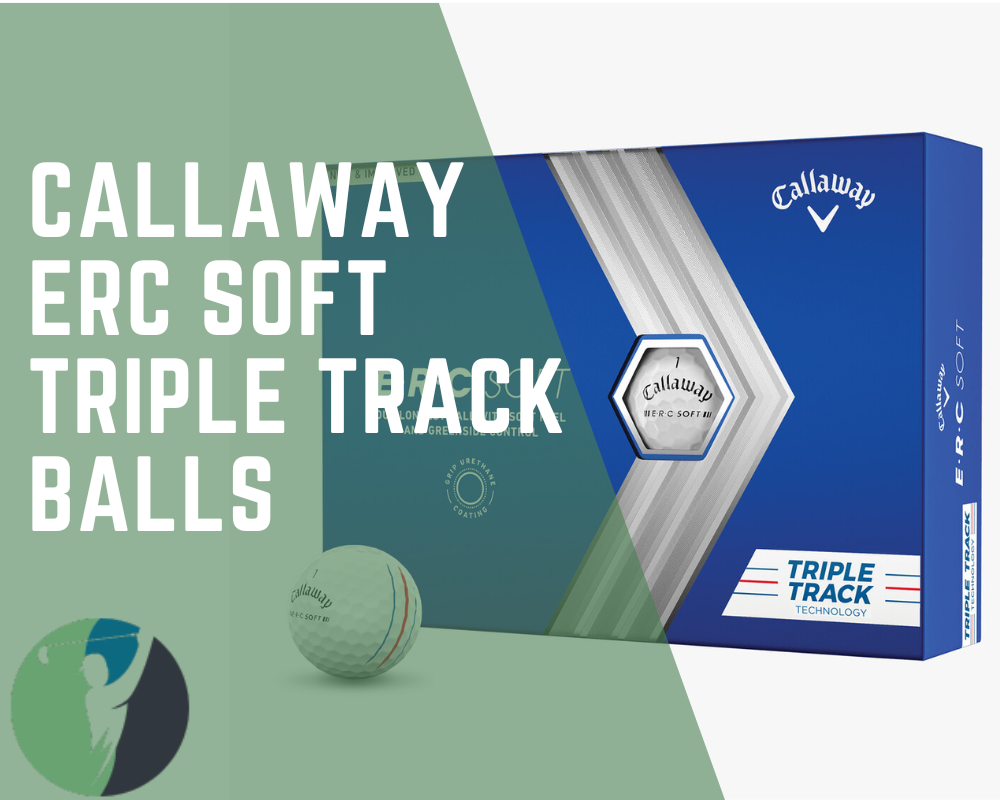
Alright, let’s talk about our next option, a ball that’s like having a personal caddie, GPS, and alignment tool all rolled into one – the Callaway ERC Soft Triple Track.
The standout feature of the ERC Soft Triple Track is right there in the name – the Triple Track alignment system. Picture this: three lines running around the ball, almost like a runway for your club. This visual aid is a game-changer for high-handicappers who struggle with alignment. Whether you’re on the tee or on the green, these lines can help you aim with more confidence and precision.
But the ERC Soft isn’t just about looking good. Callaway has packed this ball with tech to help your game. At its core (pun intended) is a large, soft compression core that promotes fast ball speeds. Translation? You get distance off the tee without having to swing out of your shoes.
The cover of the ERC Soft is made with what Callaway calls “Hybrid Cover.” It’s a blend of materials designed to offer the best of both worlds – low spin on long shots for distance and accuracy, but high spin on short shots for control. It’s like having your cake and eating it too!
Now, let’s talk about putting. The Triple Track technology really shines here. Lining up those lines with your putter can help you start the ball on your intended line more consistently. It’s like having training wheels for your putting stroke!
Who should use the Callaway ERC Soft Triple Track? If you’re a high-handicapper who struggles with alignment, battles the three-putt monster, or just wants a ball that offers a blend of distance and feel, this could be your new secret weapon. It’s also great for visual learners who benefit from clear alignment aids.
Pros:
- Triple Track alignment system aids in accuracy off the tee and on the green.
- Hybrid Cover offers a good balance of distance and control.
- Soft feel promotes confidence in the short game.
Cons:
- Some players might find the alignment lines distracting, especially if they prefer a clean look at address.
Srixon Distance Ball: The Budget-Friendly
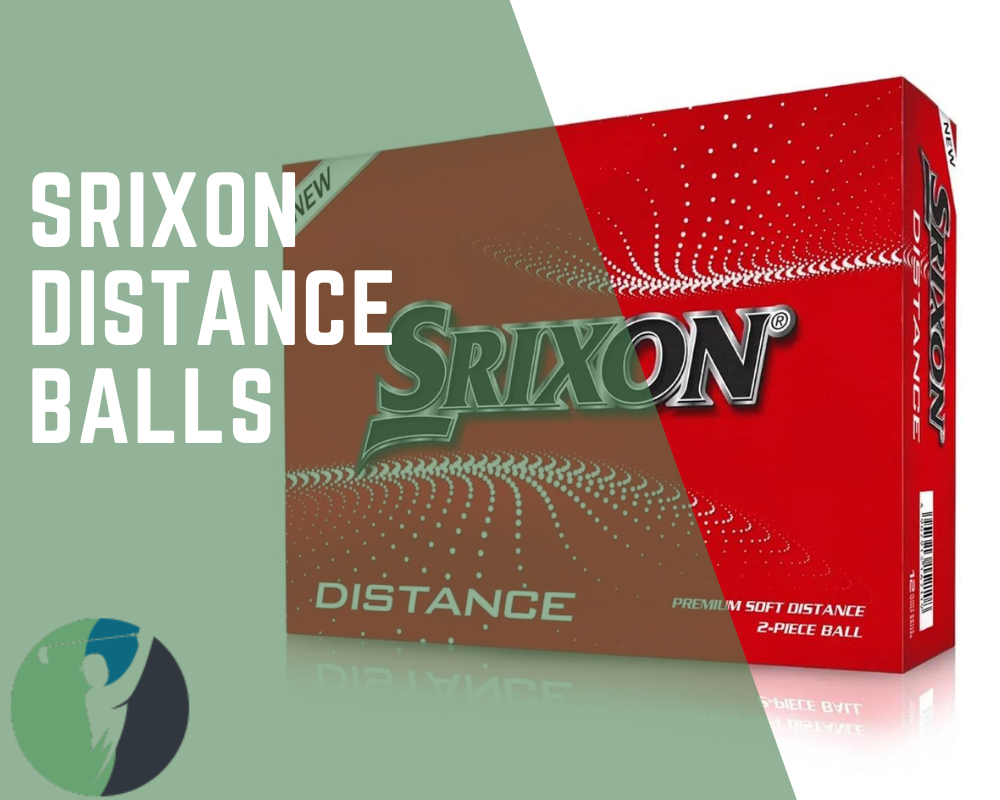
Let’s talk about a ball that’s like finding a designer outfit at a thrift store price – the Srixon Distance Ball. If this ball were a car, it’d be that reliable sedan that gets you where you need to go without breaking the bank.
The Srixon Distance is all about, you guessed it, distance. But unlike some premium distance balls that can cost as much as a nice dinner out, this one won’t leave your wallet feeling light. It’s designed for high-handicappers and beginners who want to maximize their yardage without maxing out their credit card.
At the core of the Srixon Distance is a large, soft compression center. This is great news for those of us who don’t have Tour-level swing speeds (yet!). The soft core helps to maximize energy transfer at impact, even with moderate swing speeds. The result? More yards off the tee and with your long irons.
The cover of the ball features Srixon’s 432 dimple pattern. Now, I know what you’re thinking – “Who cares about dimples?” But these little indentations are crucial for the ball’s aerodynamics. The pattern is designed to reduce drag and promote a penetrating ball flight, helping your shots cut through the air more efficiently.
One thing I really appreciate about the Srixon Distance is its durability. Let’s face it, as high-handicappers, we tend to go through balls faster than a kid goes through candy on Halloween. The resilient cover on this ball can stand up to tree hits, cart path bounces, and those occasional (or not so occasional) thin shots.
The feel of the Srixon Distance is firmer than some of the other balls we’ve discussed. This can be a pro or a con depending on your preferences. Some players love the solid feedback it provides, while others might prefer a softer feel.
Around the greens, the Srixon Distance performs adequately. It’s not going to give you Tour-level spin, but for most high-handicappers, the control it offers is more than sufficient for chip shots and putts.
Who should use the Srixon Distance Ball? If you’re a high-handicapper on a budget, someone who tends to lose a lot of balls, or a player focused primarily on increasing your driving distance, this ball is calling your name. It’s also a great option for beginners who want a durable, distance-focused ball while they develop their skills.
Pros:
- Excellent distance at a budget-friendly price.
- Durable construction stands up to mishits and obstacles.
- Penetrating ball flight helps maximize carry distance.
Cons:
- Firmer feel might not suit players who prefer a soft touch.
- Limited spin control around the greens compared to premium options.
Srixon Soft Feel Golf Balls: The Gentle Giant
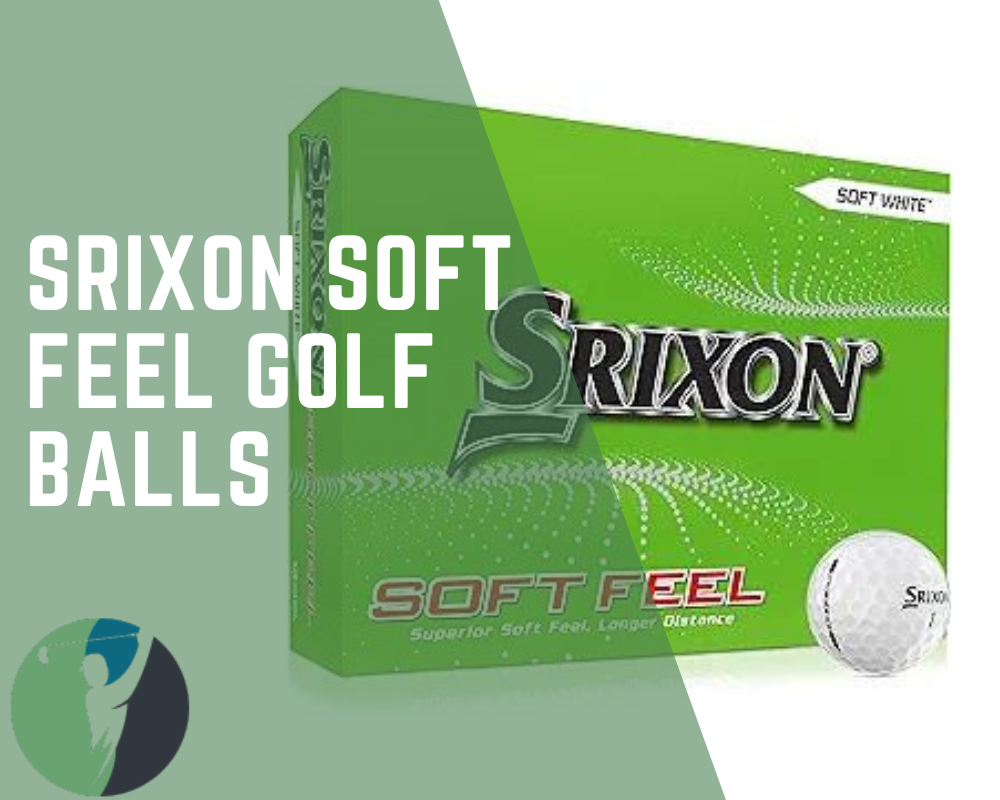
Now, let’s shift gears and talk about the Srixon Soft Feel – a ball that’s like a warm hug for your golf game. If this ball were a person, it’d be that friend who always knows how to boost your confidence, even on your worst days on the course.
The Srixon Soft Feel is, well, all about the feel. It’s one of the softest balls in Srixon’s lineup, designed to offer a plush sensation at impact that can be a real game-changer for high-handicappers. Why? Because that soft feel translates to better feedback and more confidence in your shots.
At the heart of the Soft Feel is a low-compression core. For those of us without physics degrees, this means the ball is easier to compress at impact, even if your swing speed is more “weekend warrior” than “Web.com Tour.” The result? Better energy transfer and more distance, especially for players with moderate swing speeds.
The cover of the Soft Feel is where things get really interesting. Srixon uses what they call a “Soft, Thin Cover” made from an ionomer blend. This cover works in harmony with the core to promote soft feel without sacrificing too much in terms of durability. It’s like having your cake and eating it too!
Srixon has employed a 338 dimple pattern that they claim helps reduce drag and increase lift. In real-world terms, this means your shots might stay in the air a bit longer, potentially adding a few extra yards to your drives.
Around the greens, the Soft Feel really shines. The plush feel gives you confidence on those delicate chip shots and pitches. While it may not offer the same level of spin as a premium tour ball, for most high-handicappers, the control it provides is more than adequate.
Another plus? The Soft Feel is available in bright colors like yellow and pink. This isn’t just about style – a brightly colored ball can be easier to track in flight and find in the rough. Trust me, anything that helps reduce lost balls is a win in my book!
Who should use the Srixon Soft Feel? If you’re a high-handicapper with a moderate swing speed, someone who values feel and feedback over maximum distance, or a player who struggles with confidence in their short game, the Soft Feel could be your new best friend on the course. It’s also a great option for seniors or players with arthritis who benefit from a softer feeling ball.
Pros:
- Ultra-soft feel promotes confidence and provides excellent feedback.
- Low compression core helps with distance for moderate swing speeds.
- Performs well in the short game for a ball at this price point.
Cons:
- May not provide enough distance for high-swing-speed players.
- Limited spin control compared to premium tour balls.
Nitro High-Durability Golf Balls:
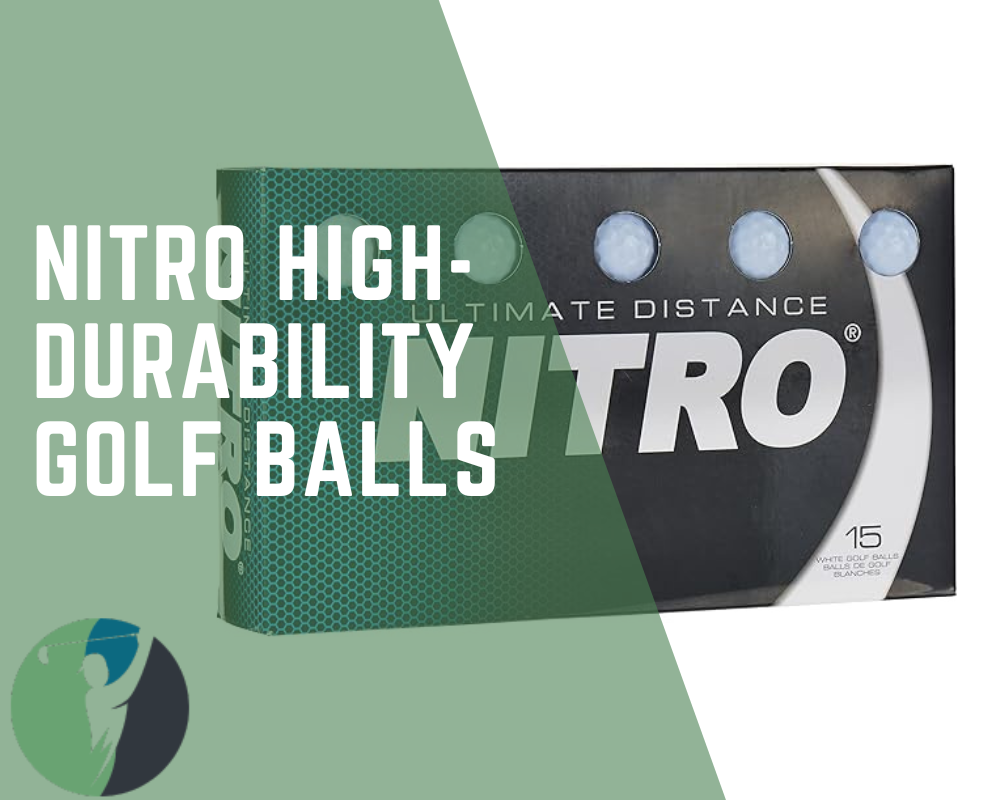
Who are they for? If you’re a high-handicapper who tends to, shall we say, “explore” the course more than you’d like (we’ve all been there), these balls are your new best friends. They’re designed to take a beating and keep on rolling, perfect for those of us still working on our accuracy.
Why are they great for high-handicappers? Well, first off, they offer exceptional distance. When you’re still figuring out your swing, every extra yard counts, right? Plus, their durability means you won’t be replacing balls every other hole. Your wallet will thank you!
What makes them unique? These balls have a special blend of durability and performance. It’s like they’ve got a secret recipe that keeps them going strong, even when you accidentally introduce them to trees, cart paths, or the occasional water hazard.
Pros:
- Extremely durable, can withstand multiple mishits.
- Provides great distance, helping you reach those far-off greens.
- Budget-friendly, perfect for those still developing their skills.
Cons:
- Might lack the soft feel some players prefer for short game.
Pinnacle Rush Golf Balls:
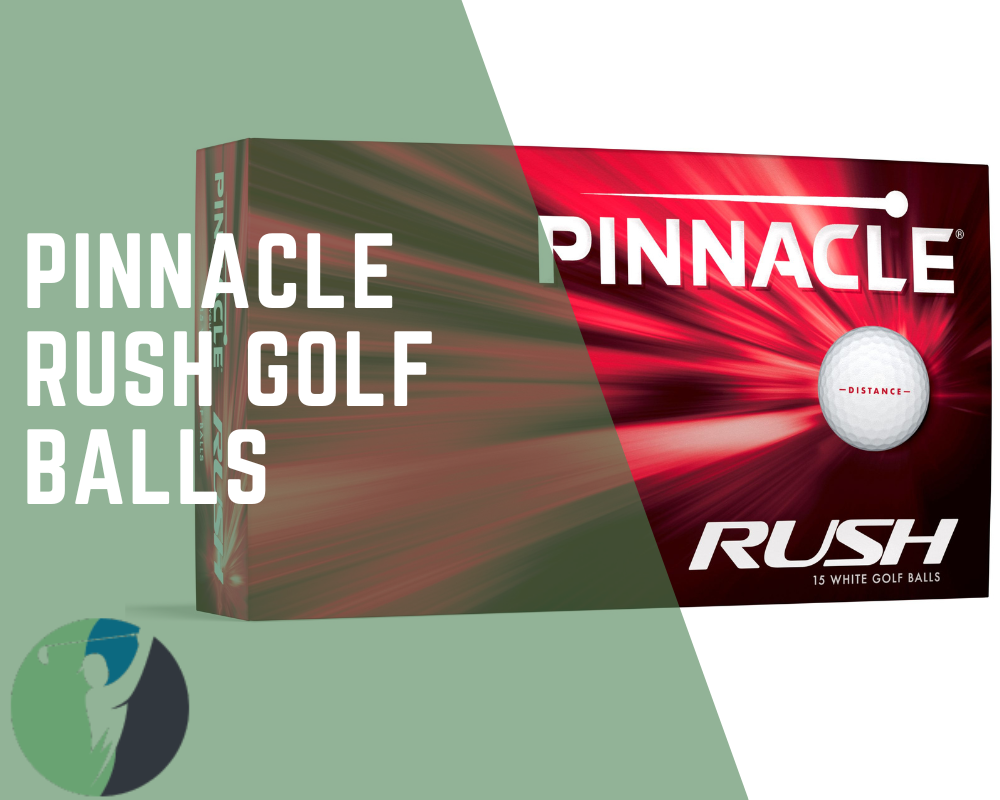
Who are they for? If you’re a high-handicapper looking to add some serious yardage to your game without emptying your wallet, the Pinnacle Rush is calling your name. They’re perfect for players who want to focus on distance while they work on refining other aspects of their game.
Why are they great for high-handicappers? Well, for starters, they’re in that sweet spot of performance and affordability. At around $20 a dozen, they’re some of the better feeling and playing balls in their price range. When you’re still losing a few balls per round (no judgment, we’ve all been there), it’s nice not to feel like you’re throwing away a small fortune.
What makes them unique? The Pinnacle Rush is all about that sweet, sweet distance. They’re designed to help you get maximum yardage off the tee, which can be a real confidence booster when you’re still working on consistency. Plus, they offer a decent feel, which is not always a given in budget balls.
Pros:
- Great distance, helping you reach those far-off fairways.
- Good value for money, perfect for budget-conscious players.
- Decent feel, especially for a distance-focused ball.
Cons:
- May not offer the spin control of more premium options.
Factors to consider when choosing a ball:
When selecting golf balls for high handicappers, consider these key factors:
- Forgiveness: Choose balls that offer forgiveness on mishits, helping to minimize the impact of errors.
- Distance: Look for balls that provide good distance, especially off the tee, to help compensate for less powerful swings.
- Soft feel: Softer balls can provide better feedback and control for high handicappers.
- Durability: High handicappers may hit more errant shots, so durable balls can last longer.
- Compression: Lower compression balls can be better for slower swing speeds, which is common among high handicappers.
- Price: Consider value for money, as high handicappers may lose more balls.
- Spin: Lower spin rates can help reduce slices and hooks, common issues for high handicappers.
- Alignment aids: Some balls feature alignment markings, which can be helpful for improving accuracy.
Conclusion:
Choosing the right golf ball can significantly impact a high-handicapper’s game. After reviewing various options, it’s clear that factors like durability, distance, and feel are crucial. While personal preference plays a role, balls like the Titleist TruFeel, Bridgestone e6, and Callaway ERC Soft Triple Track offer a good balance of performance and forgiveness for high-handicappers.
FAQs:
Do expensive golf balls make a difference for high-handicappers?
Not necessarily. Focus on balls that suit your skill level and playing style.
How often should I change my golf ball?
Change your ball if you notice visible damage or after 18 holes of play.
Can using the right golf ball lower my handicap?
While it can help, improving your technique and consistency is more important.
Should high-handicappers use soft or hard golf balls?
Generally, softer balls offer more forgiveness and better feel for high-handicappers.
Are there specific golf balls for slow swing speeds?
Yes, many brands offer balls designed for slower swing speeds, which are often suitable for high-handicappers.

